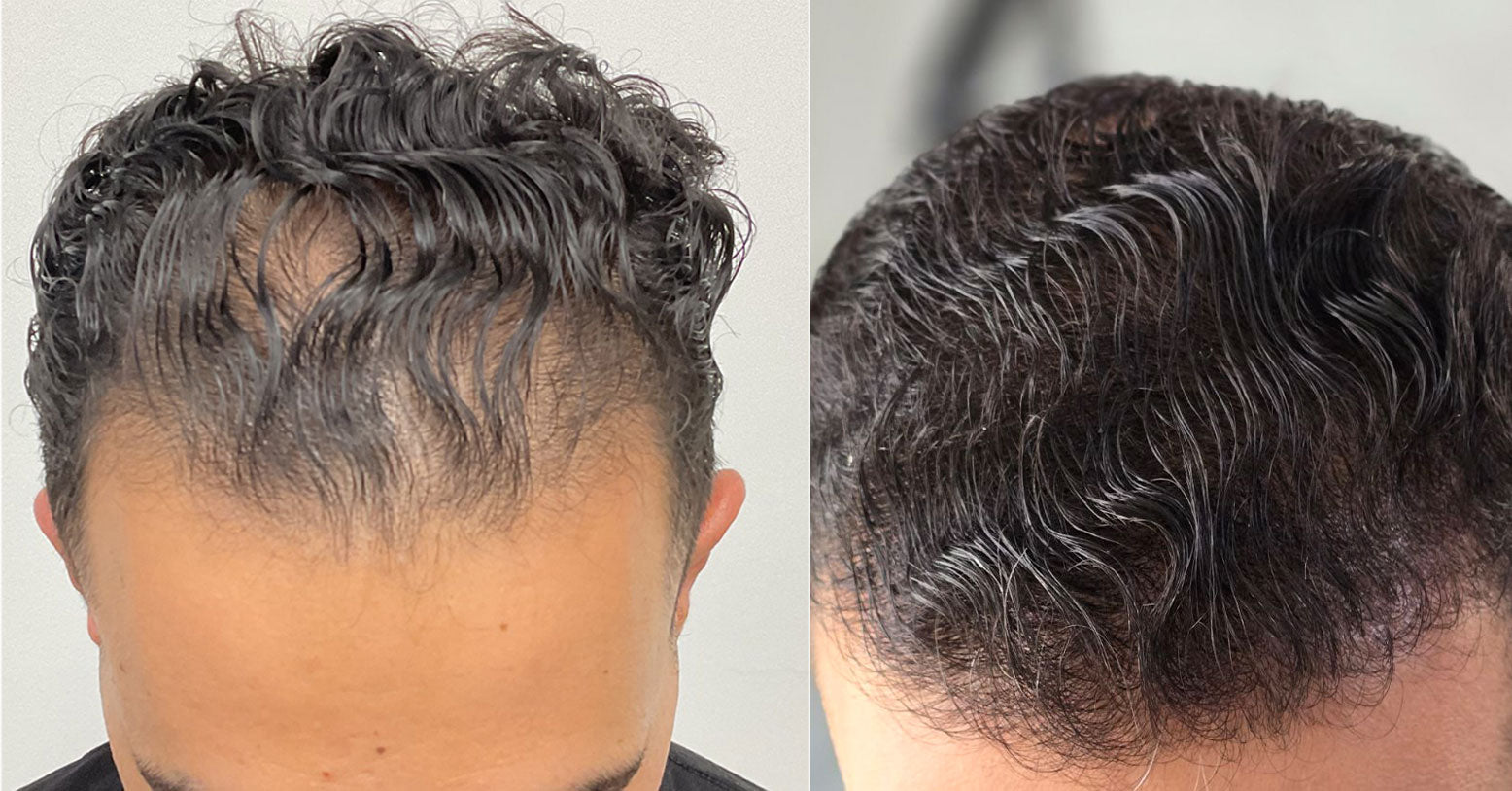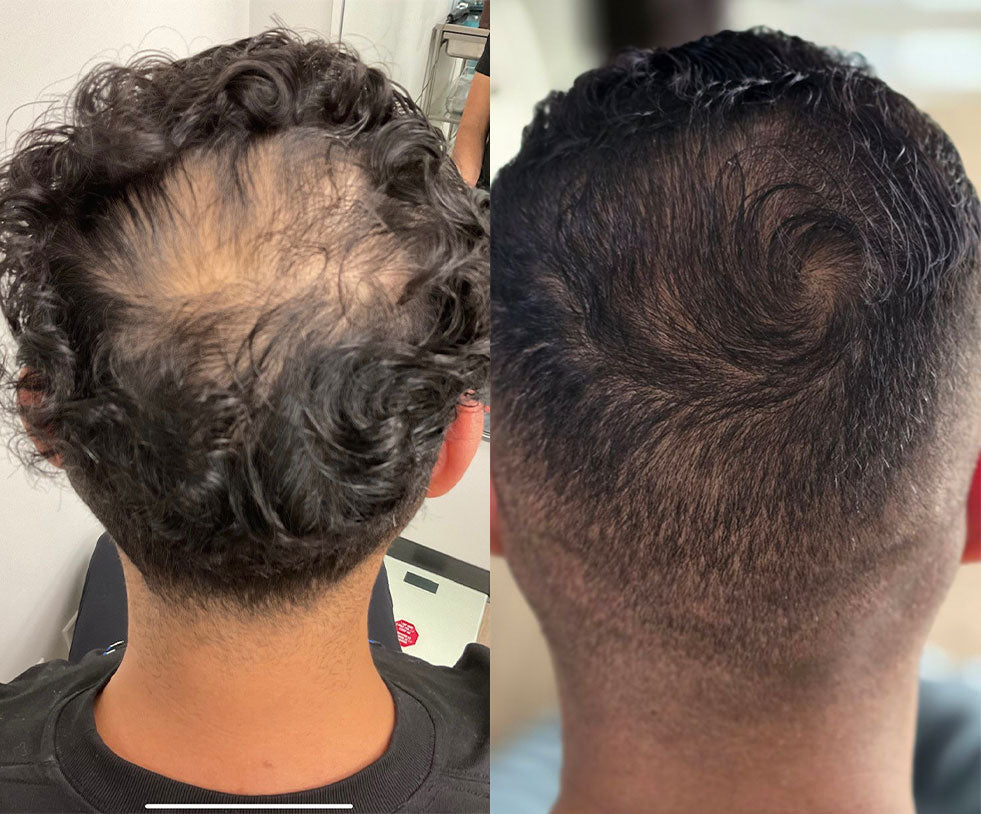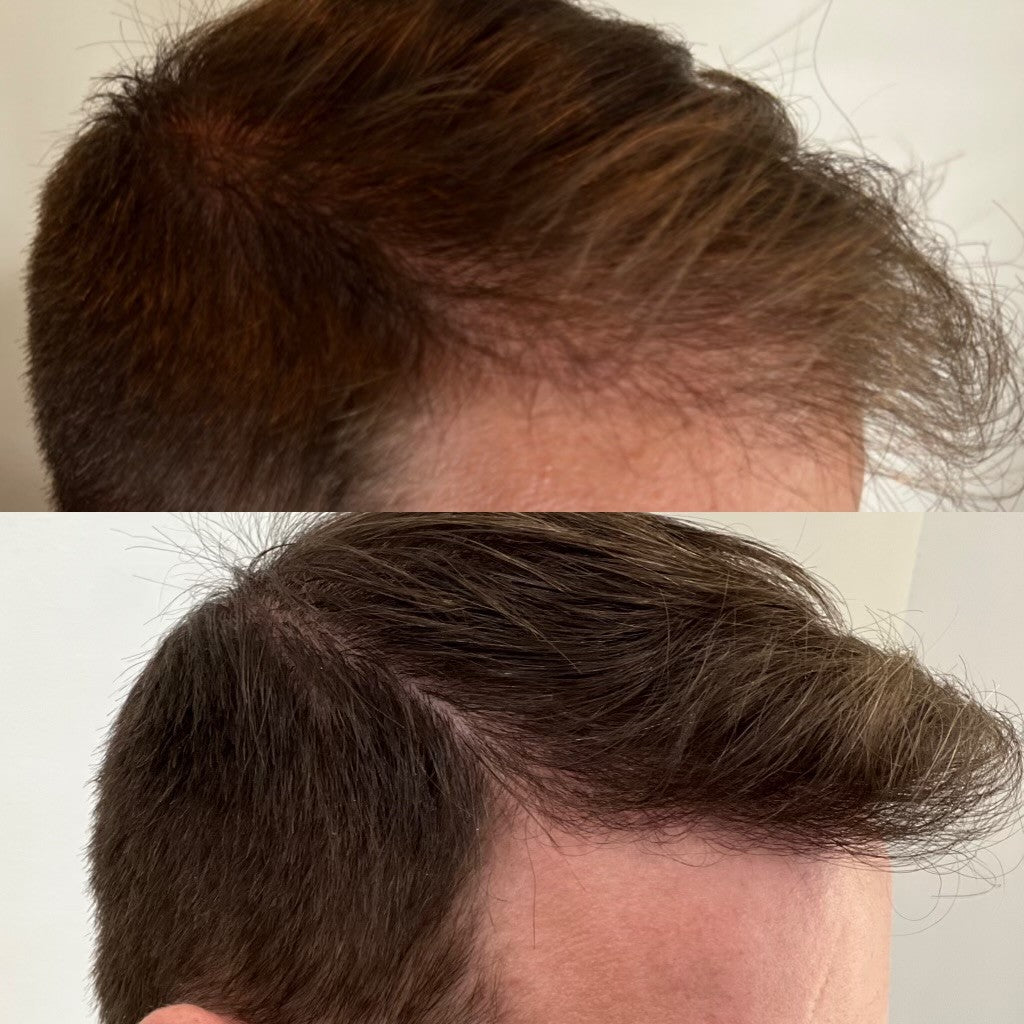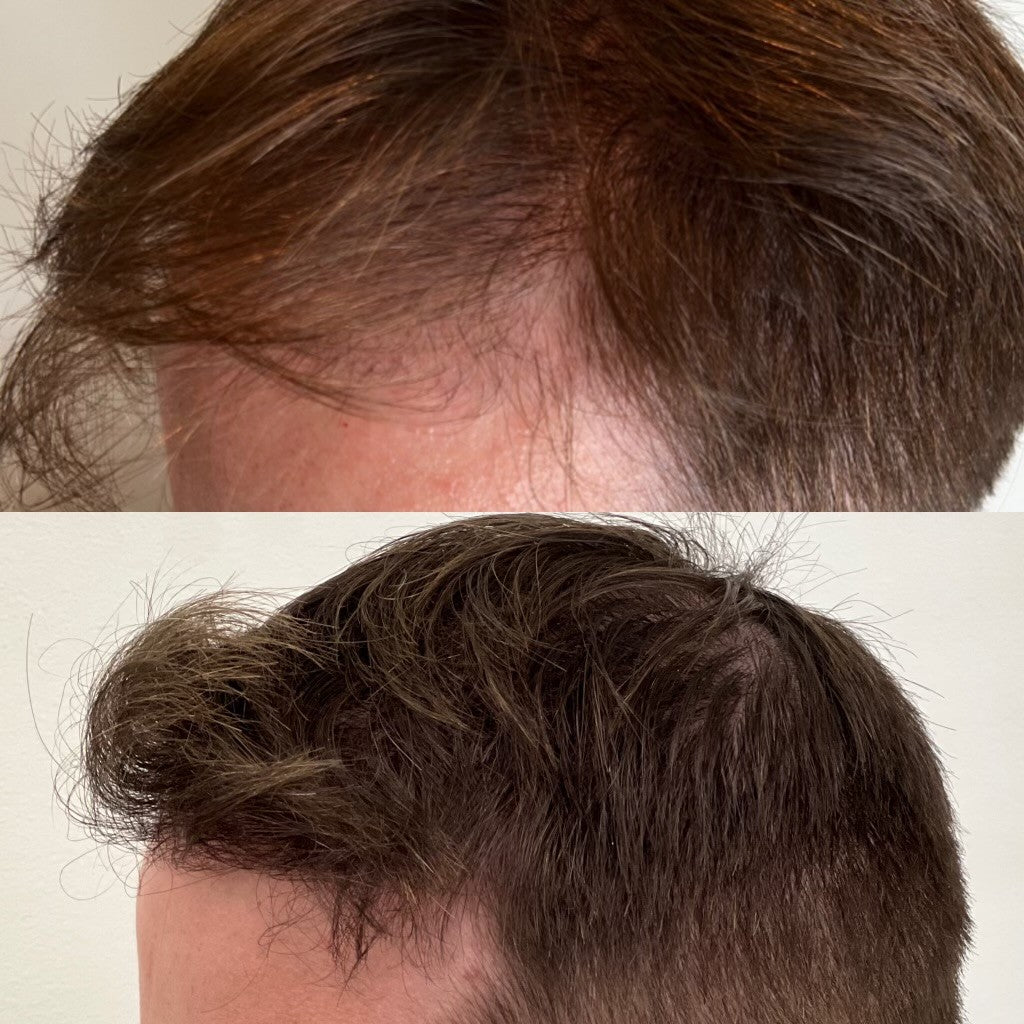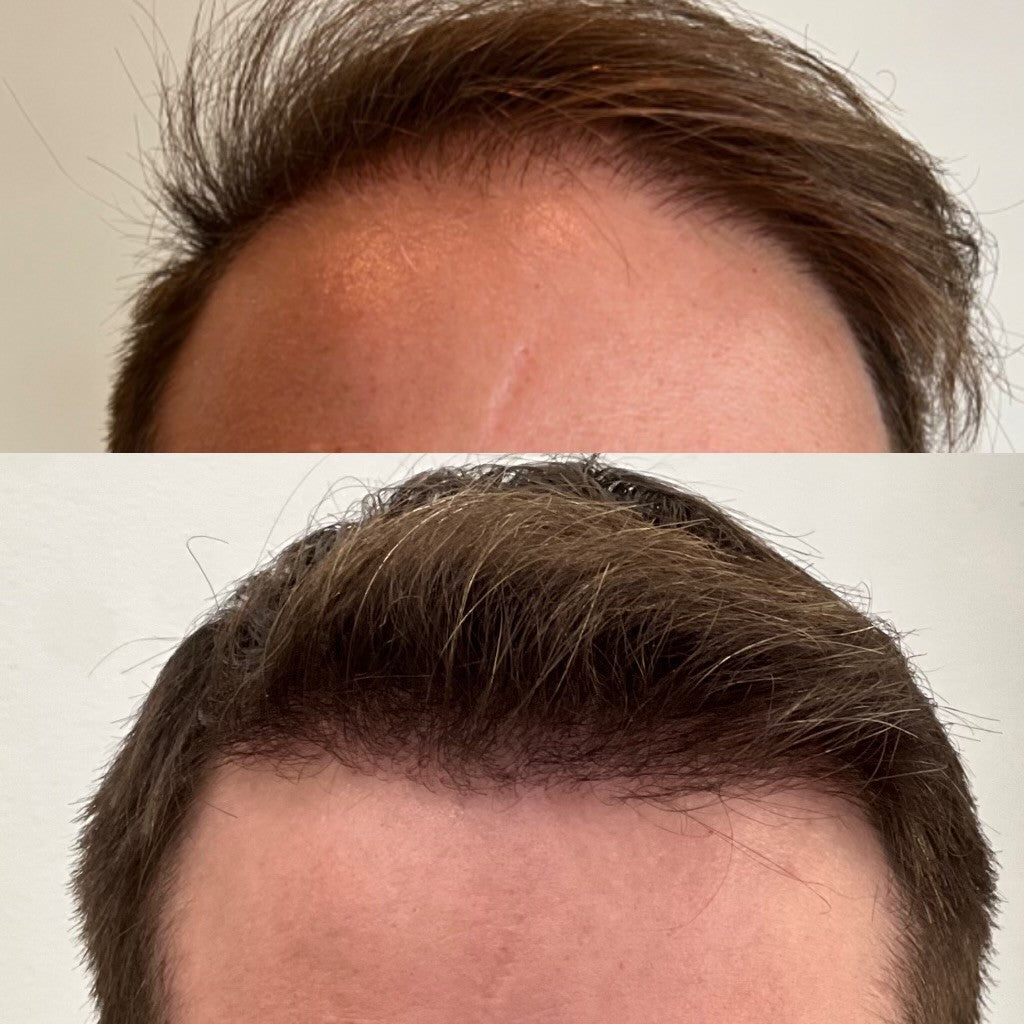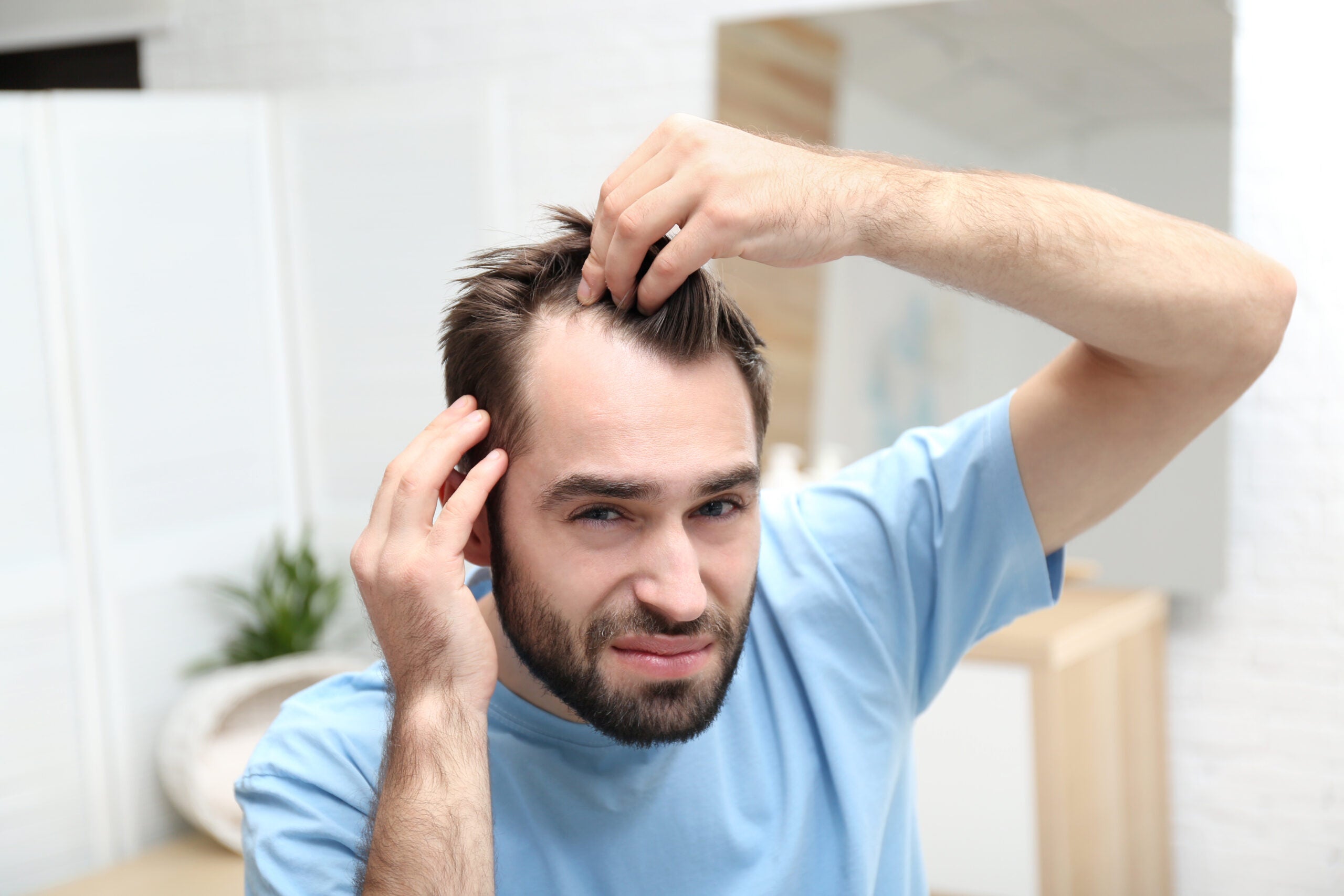Please select an answer.
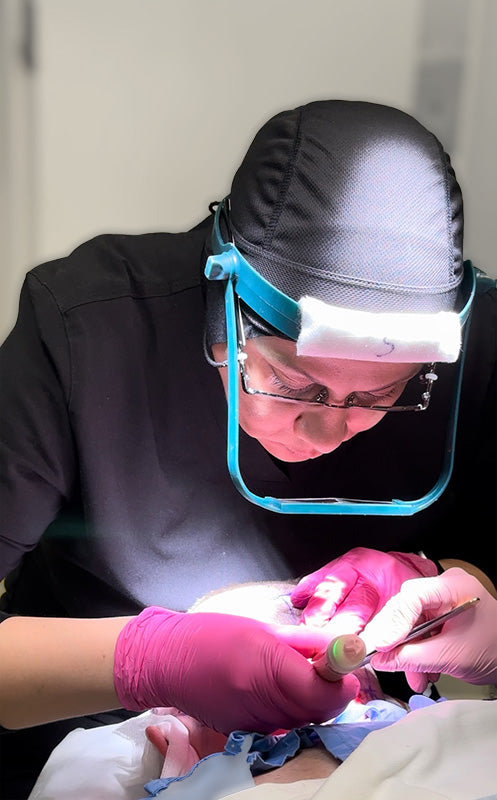
Experienced Hair Doctor in Edmonton
At our hair restoration clinic in Edmonton, Dr. Moussa has training in managing most hair loss disorders. She will listen to your concerns and perform a comprehensive examination of your hair through dermoscopy and possibly a biopsy if needed among other procedures. Being in the cosmetic industry since 2010 Dr. Moussa recognizes that hair loss may affect how you feel about yourself and your appearance.
She will offer individual care and emotional support to help you feel comfortable with the way you look.
Dr Moussa completed her training in Hair transplants and can offer more permanent solutions to increase the density of your hair.
Some more common hair-related disorders managed at our Edmonton clinic include but are not limited to:
Androgenetic Alopecia
Alopecia Areata
Traction Alopecia
Telogen Effluvium
Scarring Alopecia
Why Am I Losing My Hair: Common Hair Loss Causes
-
Genetics
The most common cause of hair loss is inherited from your family, such as male-pattern and female-pattern hair loss. These conditions may start in early 20’s and may need treatment early to avoid balding.
-
Medical Conditions
Few conditions can trigger hair fall or loss, including hormonal changes during or after pregnancy, childbirth, and sometimes in menopause. Medical conditions like hypothyroidism, PCOS etc can also lead to hair fall or loss.
-
Medications and Supplements
Certain medications, such as chemotherapy, radiation therapy, and drugs for depression, heart problems, and high blood pressure among others can cause hair fall as a side effect.
-
Physical or Emotional Stress
Surgery or a severe illness can lead to temporary hair fall or loss. Psychological stress can also contribute to hair fall or loss, although the mechanisms are not fully understood.
-
Poor Nutrition
Some low calorie diets can cause deficiencies in iron, zinc, vitamin D, and other essential vitamins and minerals, and can contribute to hair loss.
-
Tight Hairstyles and Hair Treatments
Excessive hairstyling or hairstyles that pull your hair tight, such as braids or ponytails, can cause a type of hair loss called traction alopecia. Harsh treatments like hot rollers, curling irons, and chemical treatments can also damage the hair and lead to loss.
-
Autoimmune Diseases and Hair Loss
Certain autoimmune conditions, like lupus and alopecia areata, can trigger hair loss. In these cases, the body's immune system mistakenly attacks hair follicles, leading to shedding.
-
Age-Related Hair Loss
As we age, hair growth naturally slows down. This can result in thinner, weaker hair. Hormonal shifts, particularly in men and women over 50, can accelerate the process of hair thinning.
-
Environmental Factors & Hair Damage
Exposure to pollutants, extreme weather conditions, or UV rays can damage hair, making it brittle and more prone to breakage, which may lead to noticeable hair thinning over time.
Types of Surgical Hair Transplant Services in Edmonton
Follicular Unit Extraction (FUE)
Follicular Unit Extraction (FUE) is a modern technique that involves harvesting the grafts gently and carefully one at a time and then meticulously placing them at the correct angle and orientation in the recipient sites. This is the most common technique and is best suited for clients worried about having a linear scar from an FUT procedure, who want to wear their hair short or whose scalp is too tight for strip harvesting. The procedure is usually done in over one day or two days if large number of grafts are needed. FUE is done under local anesthesia and with the use of analgesia. Pain is none to slight in most cases. A few of the potential side effects are redness, swelling, temporary numbness on the areas treated among others.

Before & After Photos
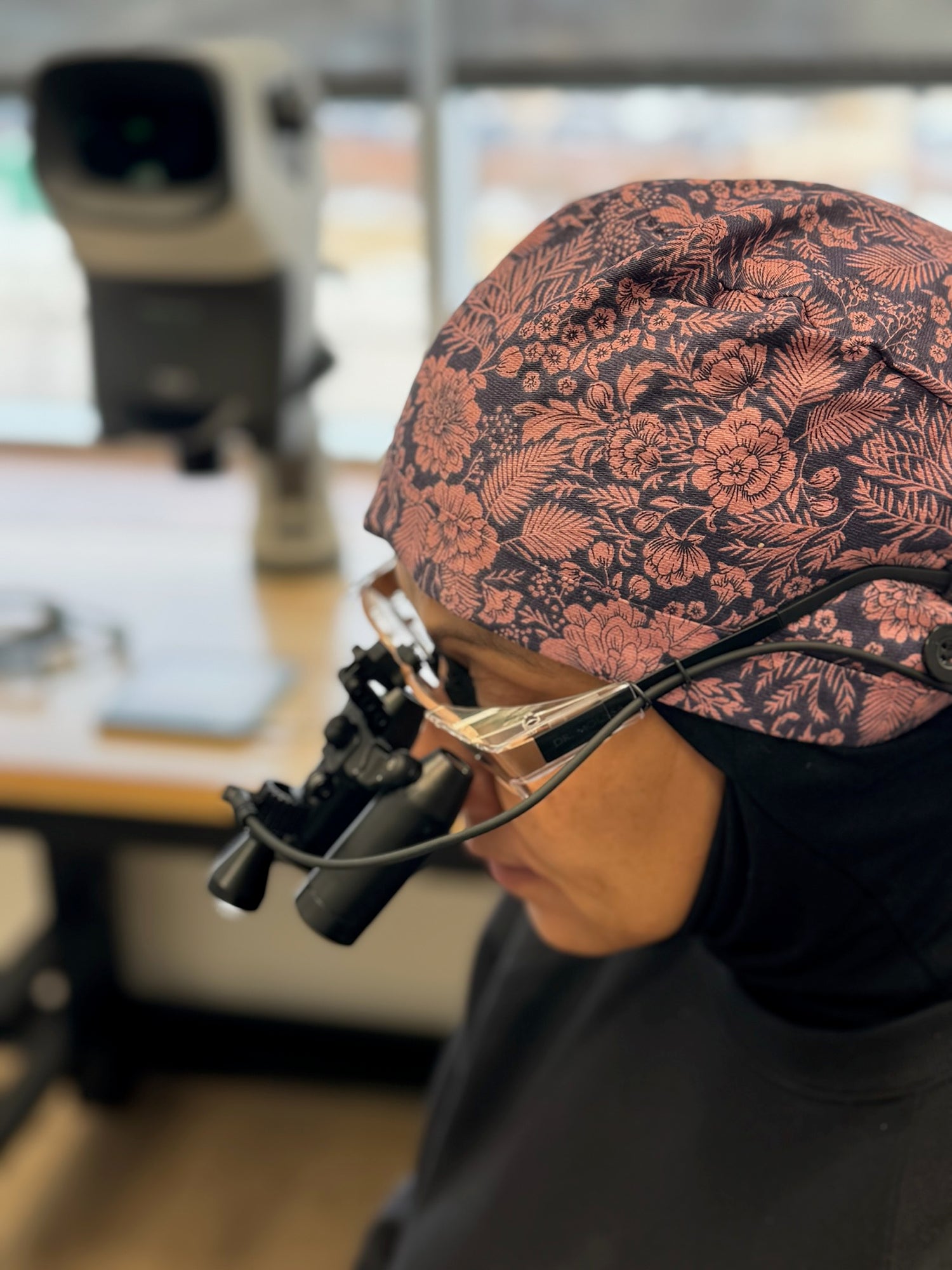
Feel Confident With Your Hair!
Dr. Moussa has long held a deep commitment to advancing the art and science of hair restoration, recognizing that true patient care addresses both hair concerns and overall well-being. She began her specialized journey through the Hair Transplant 360 course in St. Louis, Missouri, where she trained under respected experts in the field. She then pursued further intensive instruction with renowned hair transplant surgeon Dr. Sara Wasserbauer in Walnut Creek, San Francisco.
To strengthen her practical expertise, Dr. Moussa completed additional hands-on training with Dr. Véronique Dorval in Montreal. Building on this foundation, she undertook an 18-month fellowship under the mentorship of Dr. Jeff Donovan, a globally recognized authority in hair loss disorders.
Dr. Moussa has also earned certification from the Donovan Hair Academy with the Evidence-Based Hair Fellowship (EBHF), reflecting advanced training in the diagnosis and treatment of hair loss. This achievement underscores her commitment to offering patients the most up-to-date, evidence-based care in a supportive and professional environment.
In addition to her extensive training, Dr. Moussa is a proud member of the International Society of Hair Restoration Surgery (ISHRS), the world’s leading authority on hair restoration. Membership in this global, nonprofit medical association highlights her dedication to ongoing education, adherence to strict ethical guidelines, and active participation in a worldwide community of physicians advancing innovation in the field. For patients at Serene Radiance, this recognition is a reassurance that their care is guided by the latest advancements, informed by best practices, and delivered with a commitment to achieving natural, lasting results.
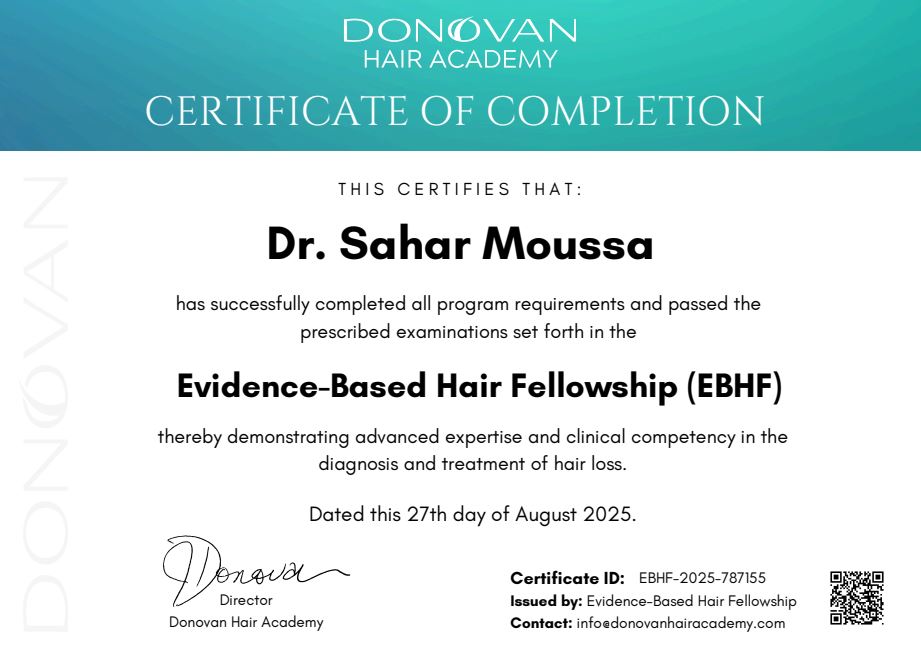
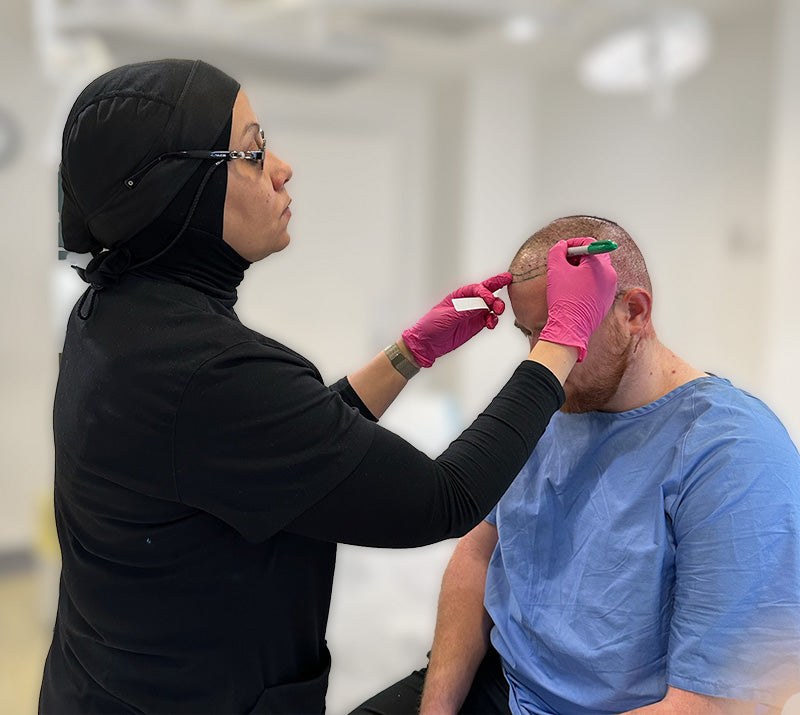
A Hair Transplant Could Be Your Hair Loss Solution! Visit Our Hair Loss Clinic in Edmonton
Free ConsultationFrequently Asked Questions About Hair Loss and Hair Transplants
What is a hair transplant?
The process involves transferring hair follicles from a donor area to thinning or balding areas for restoration. At Serene Radiance, we offer a personalized consultation to evaluate your hair loss concerns. Dr. Moussa will perform a comprehensive evaluation which may include dermoscopy or even a biopsy, to ensure that the treatment plan is tailored specifically to your needs.
How do hair transplants work?
The procedure works by extracting hair follicles from a donor area, typically the back or sides of the scalp, where hair growth is more robust. These follicles are then carefully implanted into the thinning or balding areas to restore hair density. There are two procedures available like Follicular Unit Extraction (FUE) or Follicular Unit Transplantation (FUT). Over time, the transplanted hair grows naturally, blending with the existing hair. Serene Radiance uses advanced techniques for natural results.
What are common signs of hair loss?
Common signs of hair loss include thinning on the top of the head, receding hairlines, patchy bald spots, and overall hair thinning. Additionally, you may notice more hair shedding during washing or brushing. Dr. Moussa’s extensive training in hair transplants and her focus on personalized patient care ensure that she accurately diagnoses these signs and provides tailored solutions. With years of experience and specialized credentials, Dr. Moussa offers cutting-edge treatments to help restore your hair and confidence.
Is a hair transplant permanent and how long does it last?
The results of the procedure are generally permanent because the transplanted hair follicles are taken from areas resistant to hair loss. However, natural aging may lead to some hair thinning over time. Typically, results last a lifetime, with full growth appearing within 6 to 12 months. Don’t just take our word for it—our patient testimonials highlight the successful, transformative journeys of those who have undergone hair restoration at our facility. View their before-and-after photos to see the results firsthand.
What should I expect during recovery after a hair transplant?
Recovery includes using anti-inflammatory medications, attending follow-up visits, and caring for incision points. Detailed post-transplant instructions are tailored and written for each patient’s individualized care plan. Avoid scalp trauma for the best results.
Can you wear a hat after a hair transplant and how long after?
Dr. Moussa emphasizes proper aftercare for optimal results. Generally, you should avoid wearing a hat for at least 14 days post-procedure to prevent irritation or damage to the grafts. Following her aftercare instructions will ensure a smooth recovery and lasting hair restoration.
How to sleep after a hair transplant
Sleep with your head elevated at a 45-degree angle for the first few nights. This helps reduce swelling and protects the transplanted grafts. Avoid rubbing your head against pillows to prevent any damage during the early recovery phase.
Are hair transplants worth it?
Hair transplants can be highly effective, providing natural and long-lasting results. For those seeking non-surgical options, treatments like PRP therapy and laser hair therapy offer alternative ways to stimulate hair growth and improve scalp health. These non-surgical methods can complement or delay the need for surgical procedures.
How much does a hair transplant cost in Edmonton, Calgary?
Hair transplant costs in Edmonton and Calgary depend on several factors, such as the number of necessary grafts, location of the implant area, and individual hair loss. While surgery costs can vary, we offer all-inclusive packages and flexible financing options to fit your budget. The average price per graft may fluctuate based on the extent of treatment needed for hair regrowth and thinning. Our team helps set realistic expectations and guides you through pricing details, ensuring your hair care journey is affordable and tailored to your needs.
What are the potential risks of hair transplant surgery?
Although it isn’t common, the surgery may involve risks such as allergic reactions to anesthesia, scarring, hair shock loss, pain, and infection. Some patients may experience crusting, excessive bleeding, or folliculitis. It’s important to discuss these risks with Dr. Moussa and follow post-procedure care instructions to minimize complications.
Do you accept international clients for hair transplants?
Yes, we gladly serve clients from outside Canada! If you’re traveling to us for your hair transplant from the US, we can assist with arranging hotels and other travel logistics to ensure your journey is seamless. Take advantage of the favorable exchange rate and get your hair transplant performed by a certified physician. Our team is dedicated to making your experience smooth and comfortable from start to finish.


